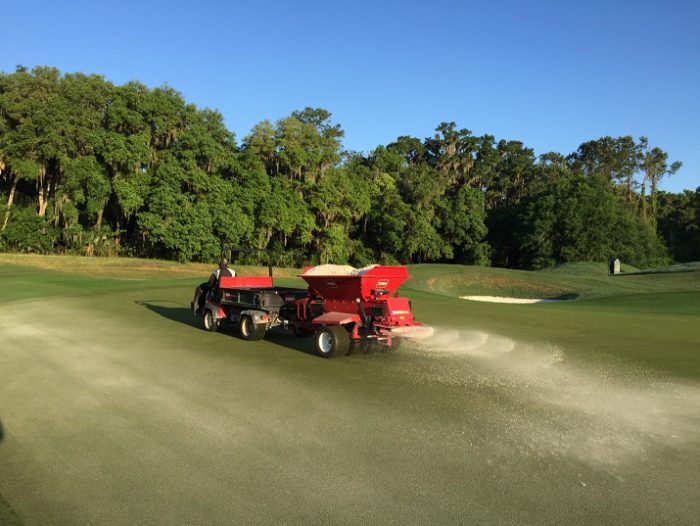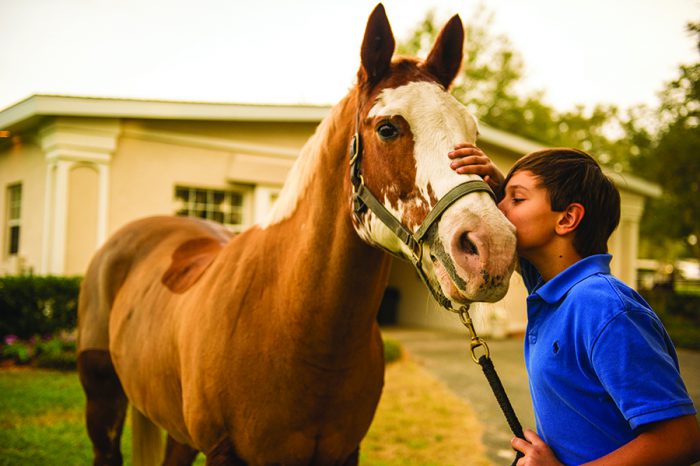Hurricane Prep
Hurricane Preparedness
Hurricane season can be unpredictable and accompanied by anxiety, but Golden Ocala Golf & Equestrian Center has a disaster plan to keep all members, staff, creatures and surroundings safe. With about two months to go before we’re free and clear, we would like to review our punch list and things to consider, so that you can understand what’s happening around you if and when the time comes. As a bonus, you’ll be able to develop your own course of action, if necessary.

Horticultural Hurricane Procedures
Director of Horticulture Bob Hollis and his crew have to be expeditious about the preparation process, as storm tracks shift and change speed quite frequently.
While attempting to continue production as long as possible, the department must have a 48-to-72-hour plan, as well as a 24-hour strategy. The scope of work two to three days before includes:
- Property-wide inspection for broken/dead limbs and trees
- Checking newly planted trees for appropriate staking or tie-downs
- Checking chainsaw and installing new blades, if necessary
- Clearing storm drains for potentially heavy water
- Mowing as much turf as possible to allow for post-storm cleanup
The scope of work a day before the storm includes:
- Fueling up equipment for post-storm cleanup
- Waterproofing and wrapping irrigation boxes
- Removing hanging plants and securing shrubbery
- Securing loose equipment or plant materials
- Backing up computer files and printing phone lists for communication
- Reviewing exit and reentry procedures with team
- Informing team of clubhouse emergency opening for storm victims, if applicable

Golf Course Management Hurricane Procedures
Any community with an 18-hole golf course, especially one on rolling hills, needs to have procedures in place. Golf Course Superintendent Jack Creveling and his team have five-day, two-to-three-day and one-day punch lists, with the last day being the one that tells them where the biggest impacts will be. From there, jobs are divided and followed up on.
The scope of work five days out includes:
- Securing extra equipment and fueling standard equipment
- Filling gas/diesel cans with extra fuel
- Prepping chainsaws
The scope of work two to three days out includes:
- Pumping lake down two to six feet, based on rain forecast
- Cleaning all drains on roof of building
- Filling 2,000 gallons of water for equestrian sector
- Coordinating with golf shop on closure schedule
On final prep day, Creveling and crew:
- Fill all water coolers with fresh water to store inside
- Remove or lay down golf course accessories as strength of storm indicates
- Power down pump station, irrigation towers and fountains
- Photo-document building and equipment
- Bring equipment like tycrop, versa-vac and back-hoe inside (flags, too, if hurricane force winds are expected to pick up)
- Assist with outdoor furniture at on-site restaurants
- Lay down statues with care

Equestrian Hurricane Procedures
Of course, for equine lovers, protecting horses from hurricanes is just as important as protecting yourself. At Golden Ocala, all the barns are concrete block and virtually hurricane-safe.
In the event of a major hurricane, the horses are kept indoors until the storm passes. This means that the barns must be stocked with feed and hay, as well as five to 10 gallons of water for each day of a potential, post-storm power outage. Possible projectiles, such as jumps and lawn furniture, must also be secured, as they can damage structures or injure horses.
Despite how well-equipped the space for the horses may be, for the average person, it is best to have a back-up shelter plan in place, as well as a plan for evacuating horses to that shelter. This needs to be decided days ahead of a hurricane — and all vaccinations, Coggins testing and a health certificate must have been complete before the storm starting forming.
According to the American Association of Equine Practitioners (AAEP), before evacuating a horse, he or she should be identified with a leather halter or luggage tag containing the horse’s name, as well as the farm’s name and phone number. Horse owners should also take photos of the horse to indicate identifying marks.
Again, according to the AAEP, when the storm is over, all horses should be inspected for eye or limb injuries. Additionally, as cleanup crews walk the pasture to remove debris, they should pick up any Red Maple tree branches or leaves, as they are highly toxic to horses, and down power lines. But before picking up storm debris or damage, take photos for documentation.
As Golden Ocala works to keep you safe during hurricane season and throughout the year, if you have any questions or would like more information, call (352) 629-6229.